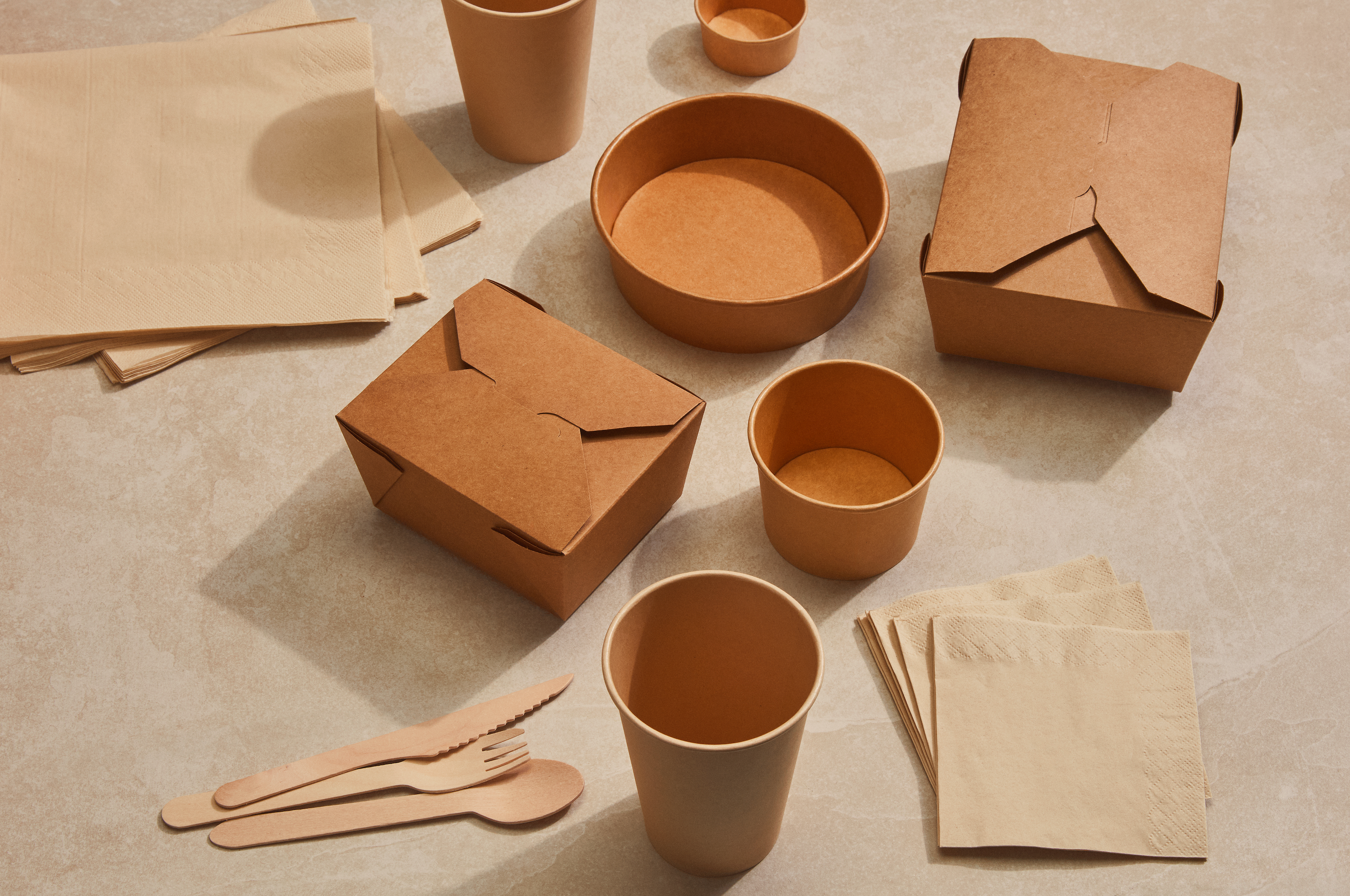From Kraft paper and bamboo fibers, to good old PET, sustainable packaging comes in a variety of different materials, each with its own characteristics and considerations. Choosing packaging made from the right materials is crucial for any foodservice business in today’s eco-conscious world. Of course, understanding the benefits of each material will help restaurateurs make the most informed and empowered decision for their business. However, all that choice -- and all that research -- can be overwhelming.
That’s where we come in. In this article, we’re diving into some of the top sustainable packaging materials currently on the market (and one non-sustainable option), outlining the benefits of each and busting myths in order to help you make the best, most sustainable decision for your foodservice business.
Kraft Paper
Kraft paper is a top choice for restaurant owners seeking sustainable packaging for three reasons: it’s recyclable, it’s compostable, and it’s cost-effective. Kraft paper is made from unbleached wood fibers, a compound which makes this material sturdy, versatile and suitable to hold a wide range of hot and cold food items. Kraft paper’s natural, unbleached appearance lends your take-out an eco-friendly look, which can be customized with your business logo or branding. To enhance Kraft's liquid resistance and improve recyclability, consider a water-based coating.
Bamboo Paper
Derived from the fast-growing, renewable bamboo plant, bamboo paper is an eco-friendly alternative to traditional paper packaging. This material is known for its strength and durability, two traits which make it an ideal candidate for your take-out boxes, trays, and cups. Bamboo paper also has excellent insulation capabilities, meaning it keeps your customers’ take-out (or take-away!) fresh and warm from the restaurant to their front door. Because it’s made from natural fibers, bamboo paper packaging lends a nice, eco-friendly touch to your customers’ take-out experience. Bamboo paper is generally recyclable and compostable, as it can be disposed of in all organic waste streams.
Sugarcane Pulp
Sugarcane pulp, also known as bagasse, is a byproduct of sugarcane processing in the agriculture industry. So, not only is sugarcane pulp entirely biodegradable and compostable, its production is relatively low-impact compared to other sustainable materials. Sugarcane pulp is tough and stands up well against a variety, making it a great choice for take-out containers, bowls, and plates. In addition to being sturdy, sugarcane pulp is heat-resistant and microwave-safe. It’s really the material that does it all!
Recyclable Plastics
Unlike single-use plastics, recyclable plastics like PET (Polyethylene Terephthalate) or HDPE (High-Density Polyethylene) can easily be remade into new products, minimizing landfill waste white promoting a circular economy. Because recyclable plastic packaging is similar in look-and-feel to old single-use plastic, it’s crucial that restaurant owners inform customers about proper recycling practices in order to ensure the packaging doesn’t end up back in a landfill.
Bioplastics
Once considered a top sustainable alternative, bioplastics like PLA (polylactic acid) have faced scientific scrutiny and are no longer considered much of a sustainable choice for packaging, among other uses. In fact, many Canadian cities have recently banned the use of bioplastics, along with other kinds of single-use plastics.
Why? While bioplastics are derived from renewable resources like cornstarch or sugarcane, their biodegradability and compostability are seriously limited. Often, these materials require highly specific industrial conditions in order to fully break down and can also contaminate recycling streams if not properly disposed of. Because of this, foodservice businesses are encouraged to explore the many, many other eco-friendly alternatives on the market today.
No matter which sustainable material you choose, it’s essential to educate your customers on your packaging’s proper end-of-life instructions. Helping your customers properly dispose of their take-out containers helps you maximize your sustainability efforts by keeping your packaging out of landfills. Because, after all, isn’t that why you chose it in the first place?
Shop our curated packaging solutions made from sustainable materials.







